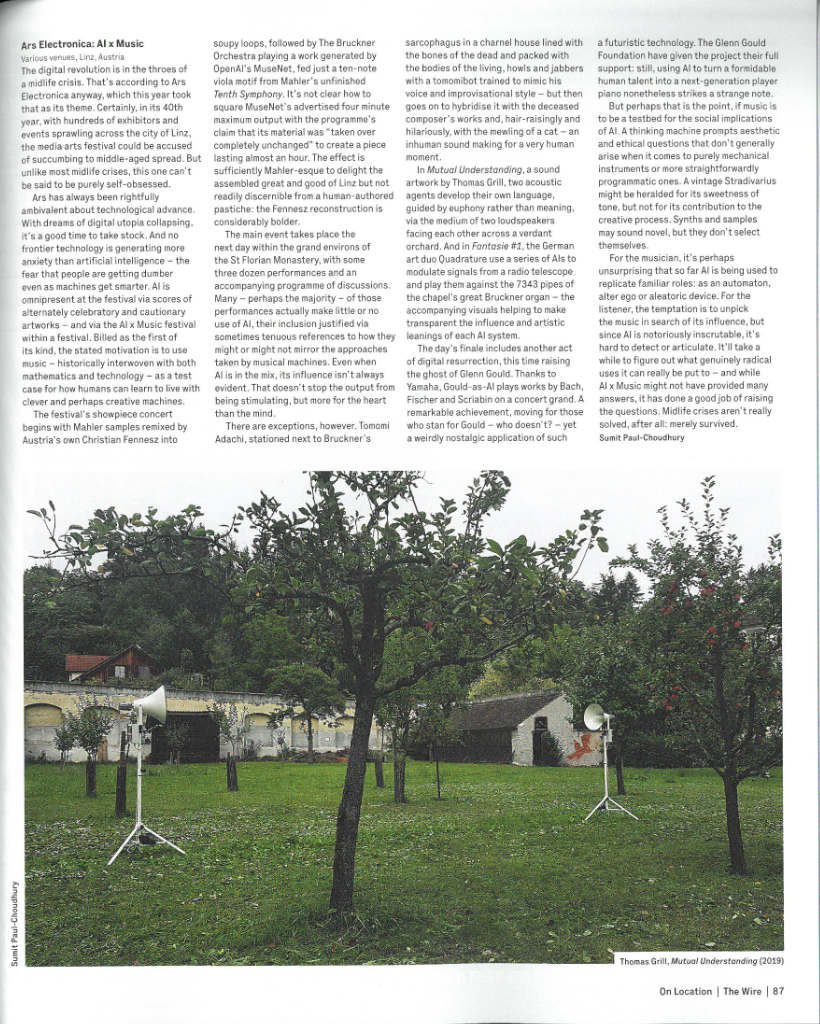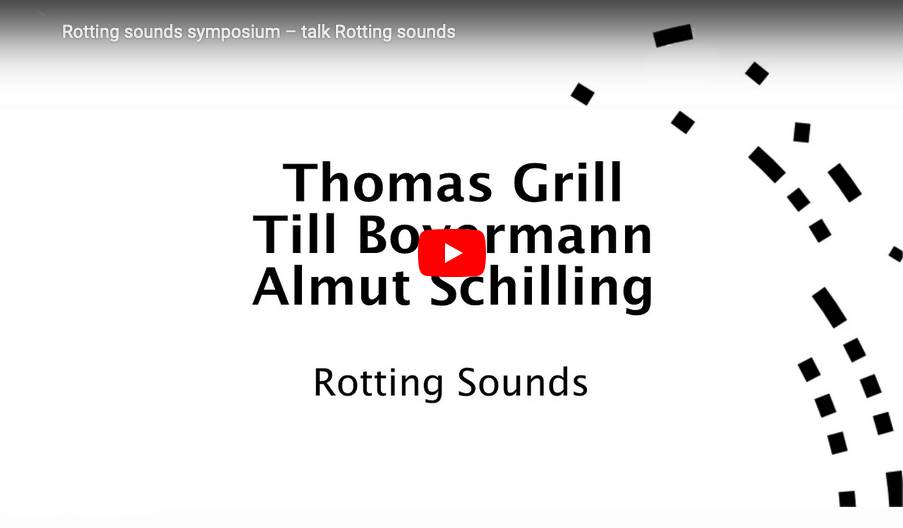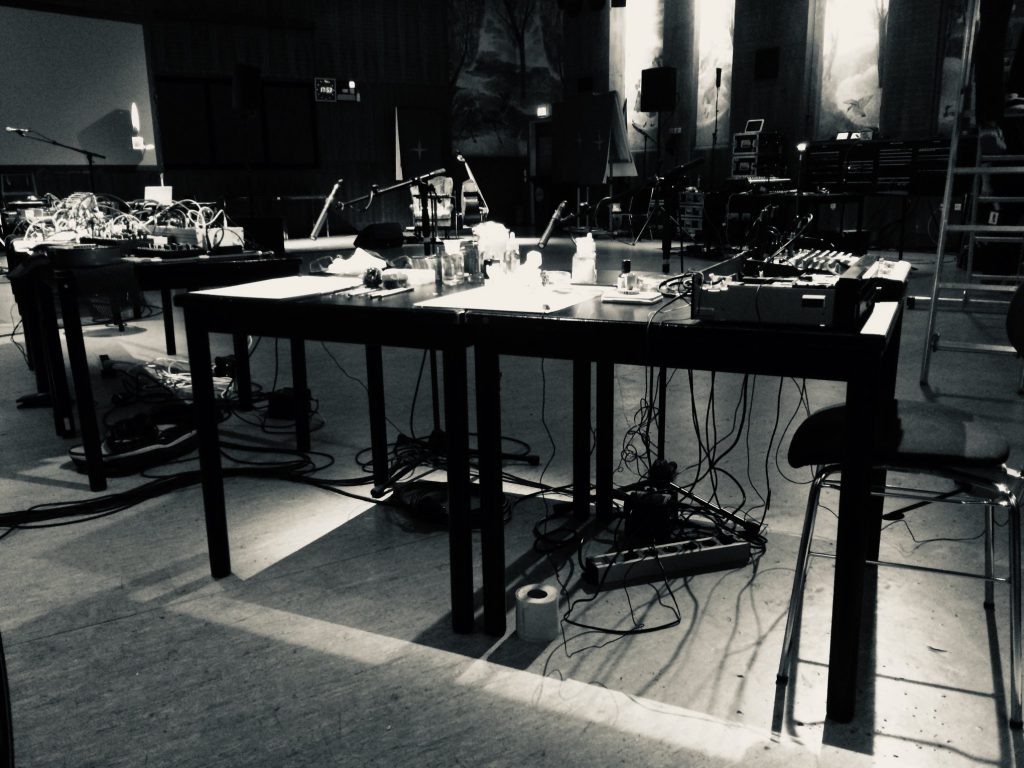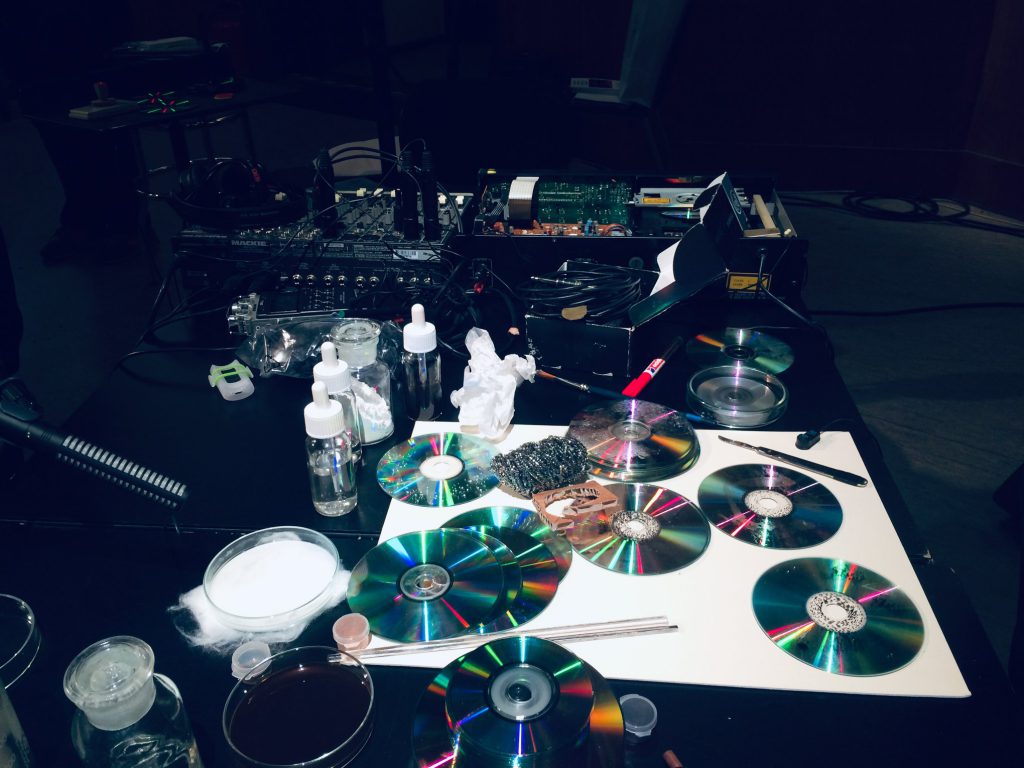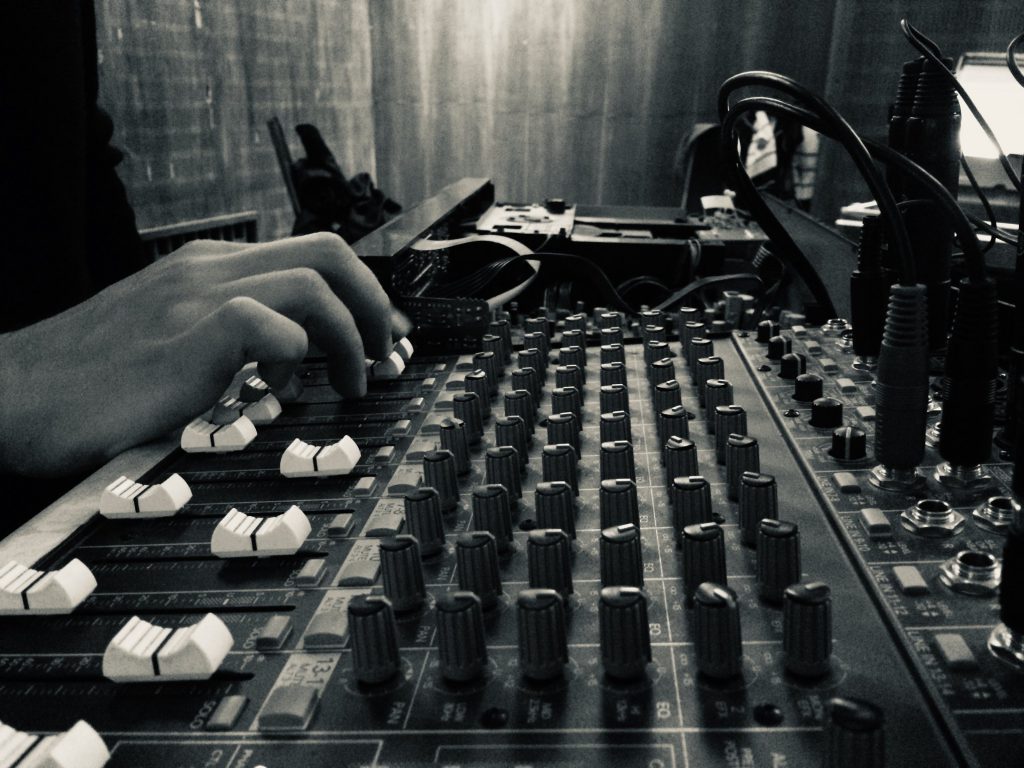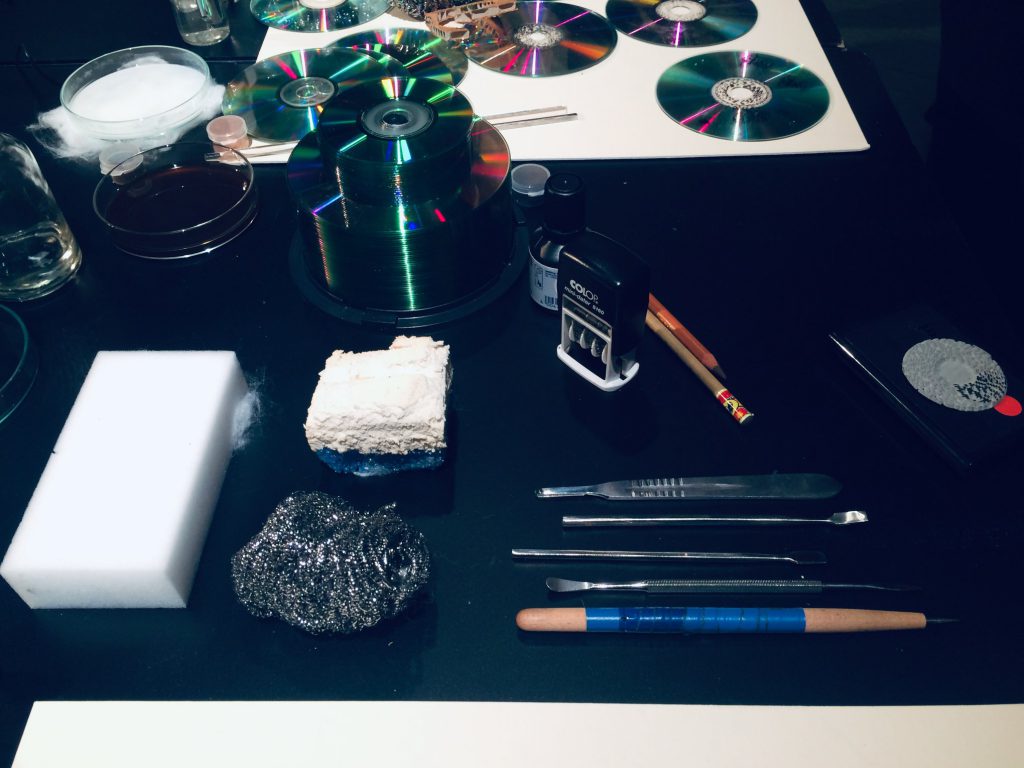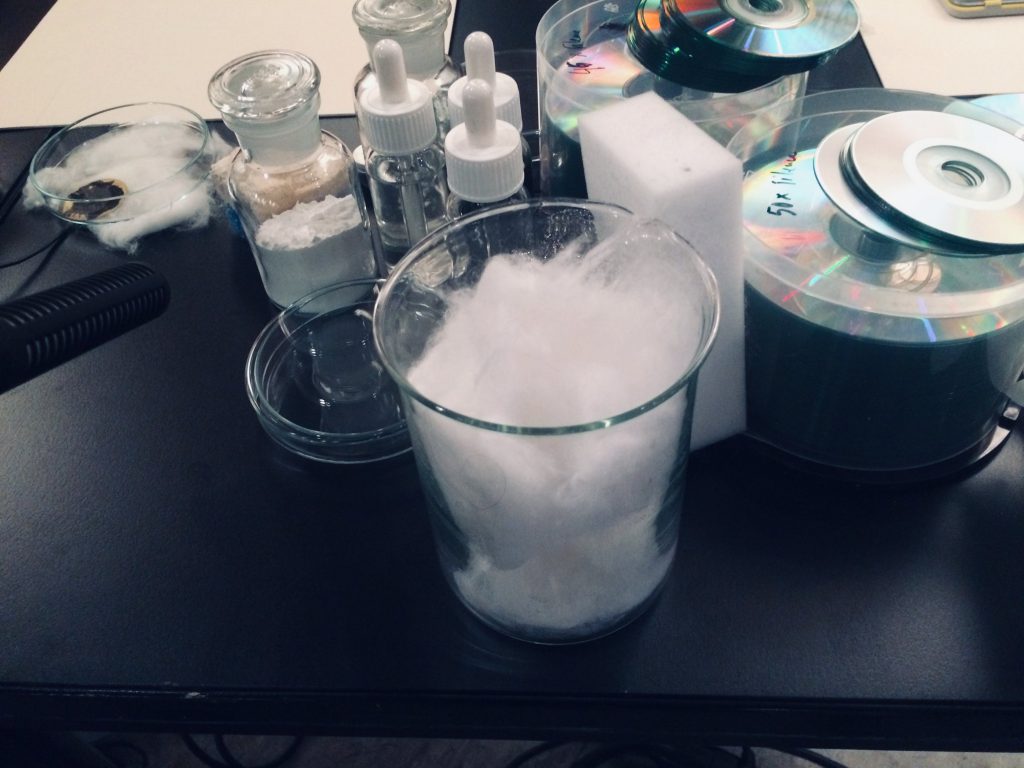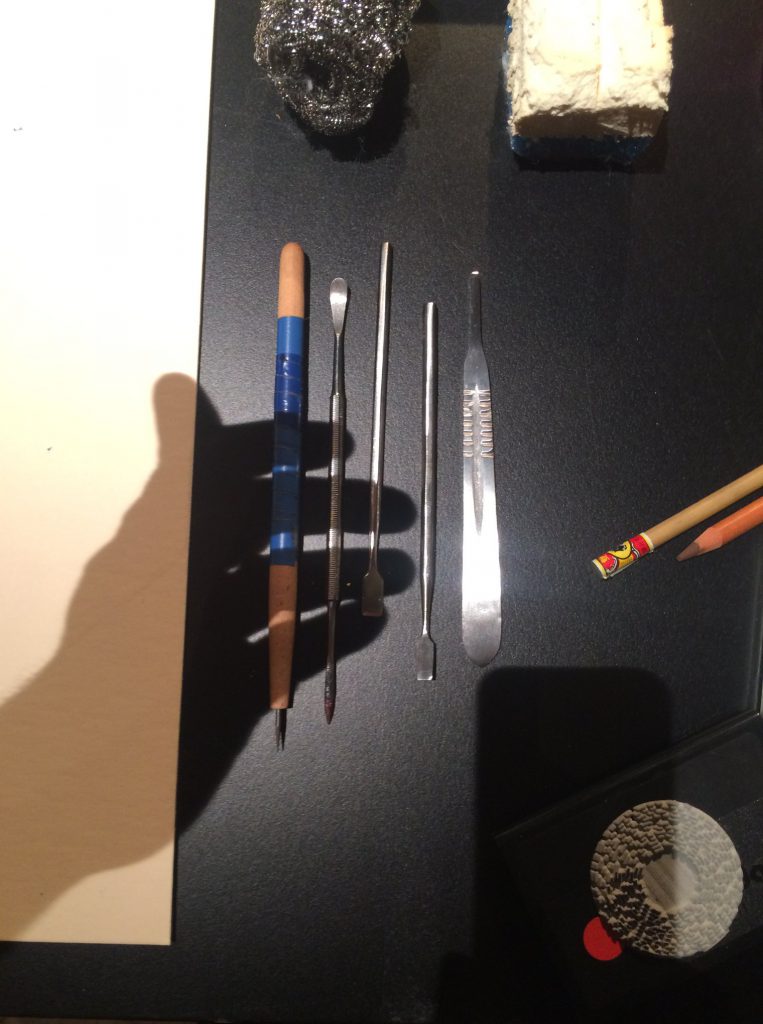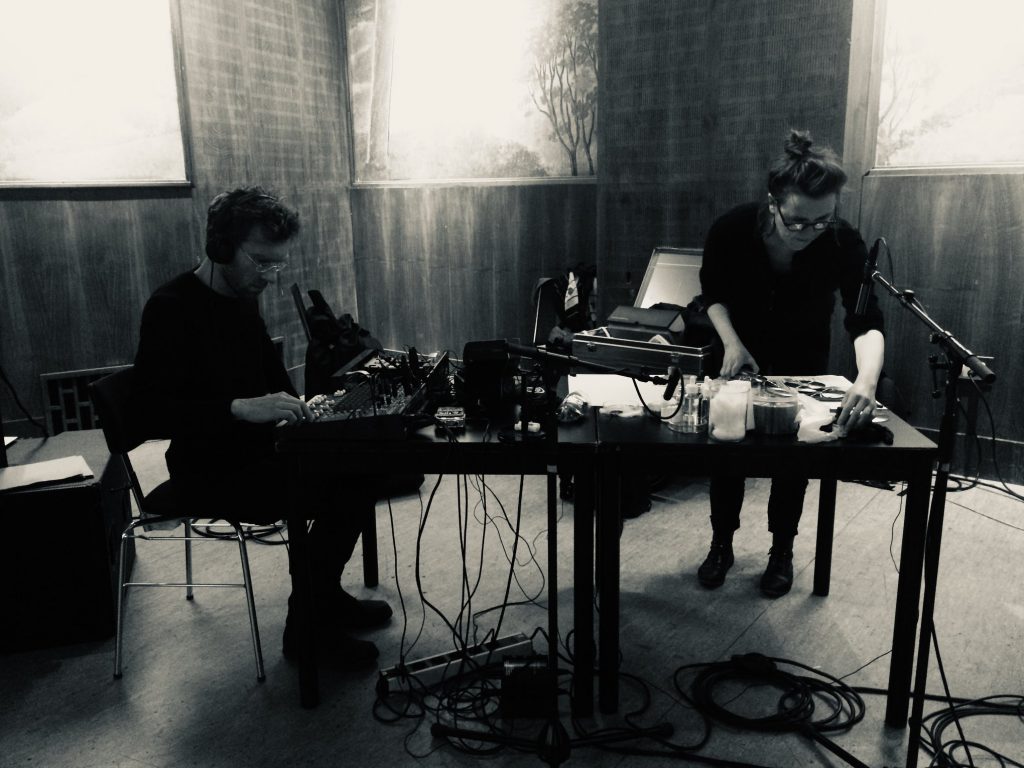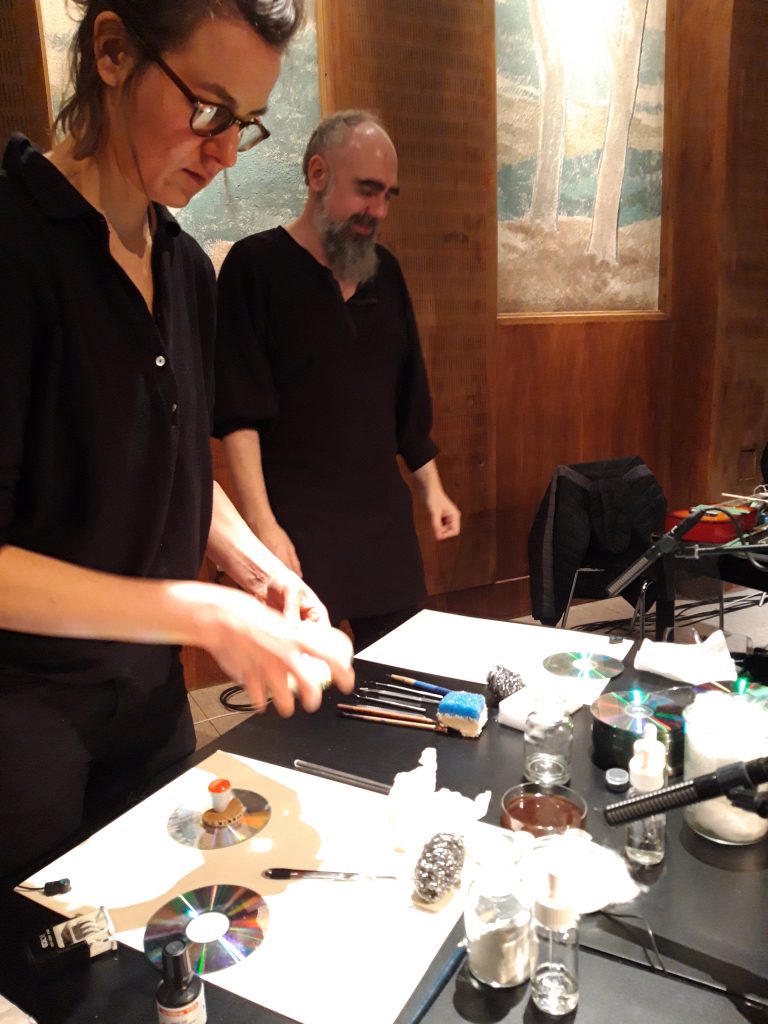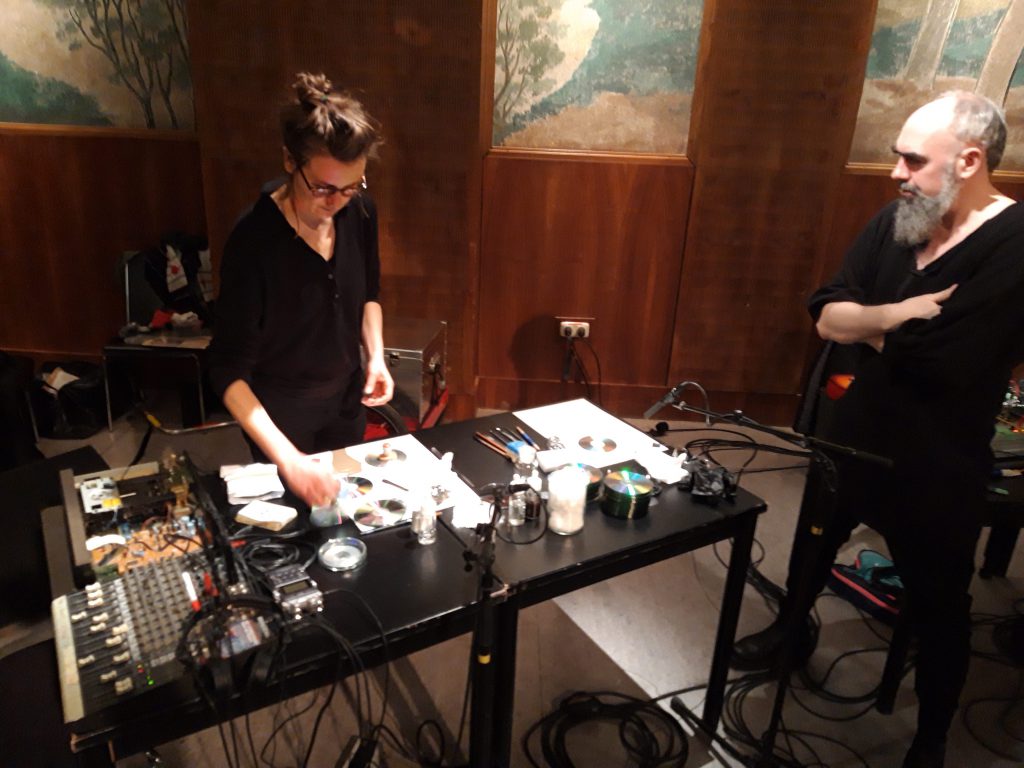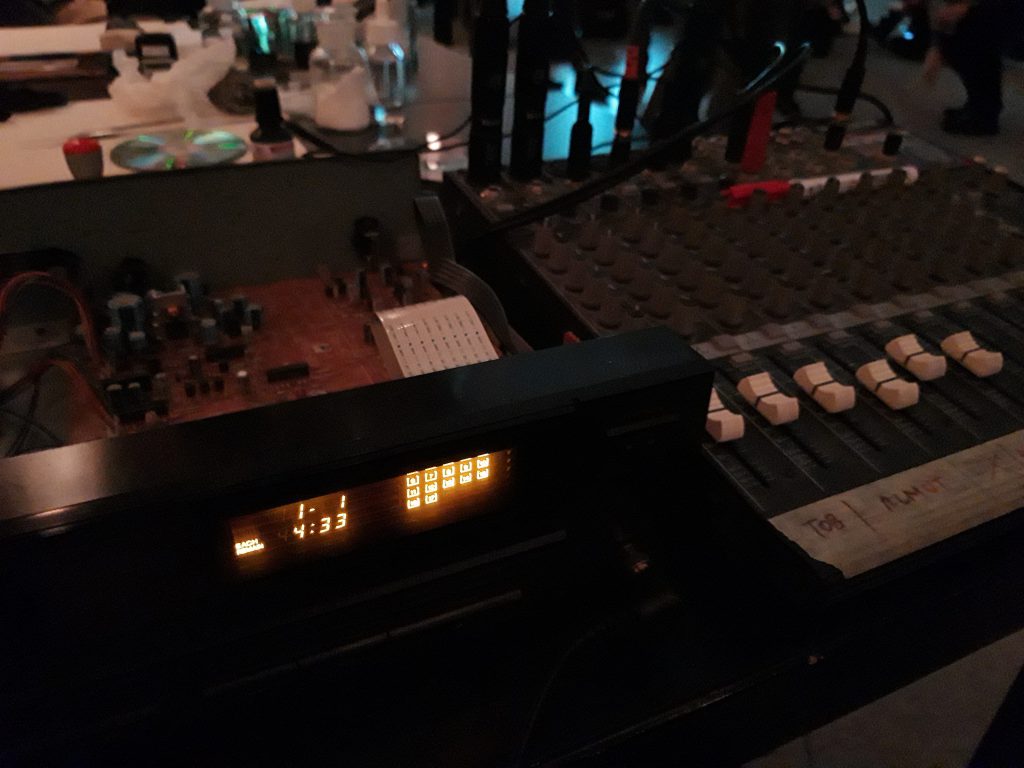News
Fragments of Rotting Sounds, book presentation March 27, 2025
Our book Fragments of Rotting Sounds appears in paper at Mark Pezinger Publishing (edition of 20) and also as a digital version (infinite edition) on the Research Catalogue.
The book presentation takes place March 27 2025, 18h at the Bankettsaal of mdw – University of Music and Performing Arts Vienna, Anton-von-Webern-Platz 1, 1030 Wien.
Online guest lecture at KTH Royal Institute of Technology, November 2
Rotting sounds – Digitality and materiality
Most of today’s media output, be it audio or video, is produced and stored in the digital domain. Although digital data are adorned by the myth of lossless transmission and migration, everyday experience does prove the existence of degradation and, ultimately, data loss in various forms. This pertains to the physical nature of storage media and playback devices as well as to media formats and software in the context of their technological infrastructure. The ongoing multi-year project of artistic research “Rotting sounds” strives to elaborate on the causes, mechanisms and effects of such deterioration, specifically in the context of digital audio.
In this talk, I will focus on the material nature of the digital and its implications. I will illustrate this with concrete artistic works that have been created in the course of research.
Time: November 2nd 2021, 15:00 CET
Location: https://kth-se.zoom.us/j/61230315241
Rotting sounds symposium, September 23+24
Since 2018, the project of artistic research Rotting sounds – Embracing the temporal deterioration of digital audio has been researching transformation processes pertaining to the diverse interrelations of digitally encoded information in the audio domain, its material properties and (human) interpretation within a sociocultural context. This symposium provided a room for reflection on the acquired experiences in the course of the project, to bring in external viewpoints on the relevant topics and stimulate outlooks beyond the limits of current research.
Find more info here.
co-curated and produced by sound:frame

Performance at Sound Campus, Ars Electronica Festival Linz, September 11
Thomas Grill, Till Bovermann and Kathrin Hunze will perform “merge and dissolve”, an audiovisual performance concept in the SOUND CAMPUS program, part of the Ars Electronica Festival 2020.
This performance involves three interactants, two predominantly working in the audio domain (Thomas Grill and Till Bovermann) and one focusing on a visual counterpart (Kathrin Hunze). We generate and exchange streams of 1-bit audio, a signal representation with properties of both the digital and analog domain that we have already been investigating in the artistic research project “Rotting sounds – Embracing the temporal deterioration of digital audio” (FWF PEEK AR445-G24). With simple switchboard matrix devices, we channel such bit streams between the individual performers and through simple processing modules, like delays, logical operators, etc., generating feedback and interferences on the way. These phenomena are made audible and are also mirrored by a visual representation of particle streams, forming directed jets and point cloud aggregations.
11. September 2020 – 20:10 – 20:35
Hauptplatz 6, Glashörsaal D (H6.DG.04)
4020 Linz, Austria
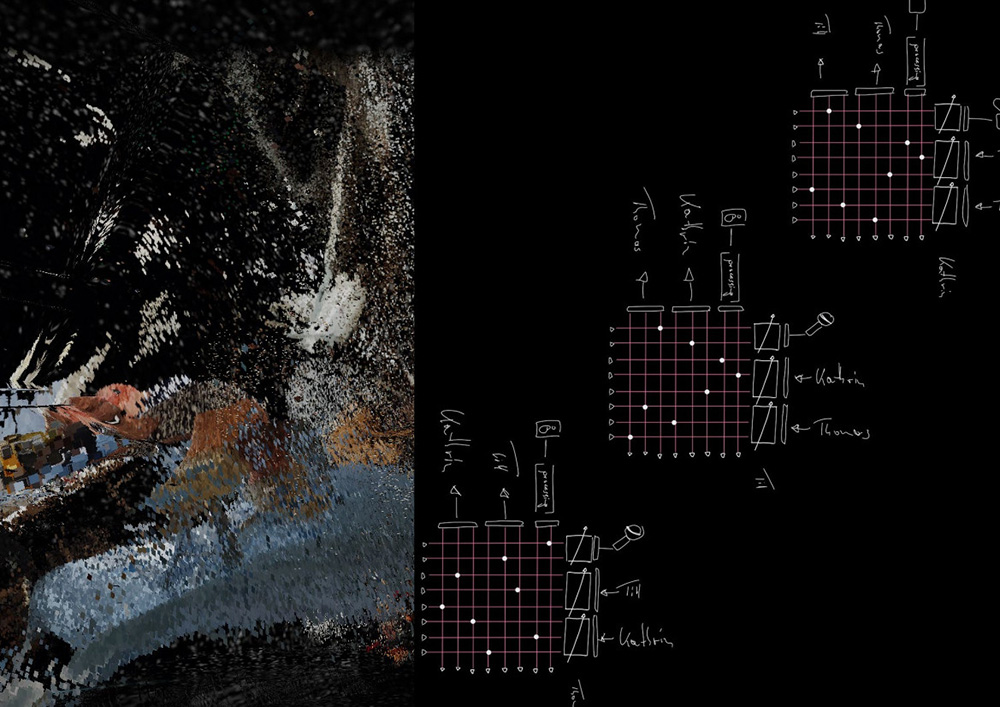
Dust a bit – recordings
The audio-laser installation dust a bit by Klaus Filip is the first of our installations, which – over the duration of more than a year – has eroded to a state which would be commonly described as “broken”, at least from the standpoint of the original concept.
The audio signal is not modulated onto the laser any more, as intended – what is heard is purely collected, amplified noise.
At this point, we will not attempt to repair it because it is already scheduled to upgrade the installation to a fully digital version on the basis of our custom 1-bit audio hardware DADA. We expect this to happen at the end of June 2020.
In the last year, the installation has been restarted a couple of times because the carefully calibrated laser beam tends to wander out of focus by the time. This is most probably due to temperature changes and/or vibrations, causing the mirrors to lose their precise adjustment.
We have prepared timelapse recordings of the sonic developments of the several installation runs – every time several weeks of collecting “dust”. One minute of a time lapse corresponds to a day of operation. Technically, the recordings are concatenated (and cross-faded) 1-minute snapshots taken every 12 hours. The naming of the recordings corresponds to their starting date. Enjoy!
2019-05-07 2019-08-21 2019-09-20 2019-11-07“gestern-heute-morgen in der Konservierung” – Verrottende Klänge bei der Tagung des Österreichischen Restauratorenverbandes
At the annual conference of the austrian restorers association the rotting sounds were represented by Almut Schilling, discussing the <patina> as fundamental part of all preservation processes and opens valuable points of views to think about digital aesthetics of temporal deterioration.
6.-7.03.2020 Salzburg
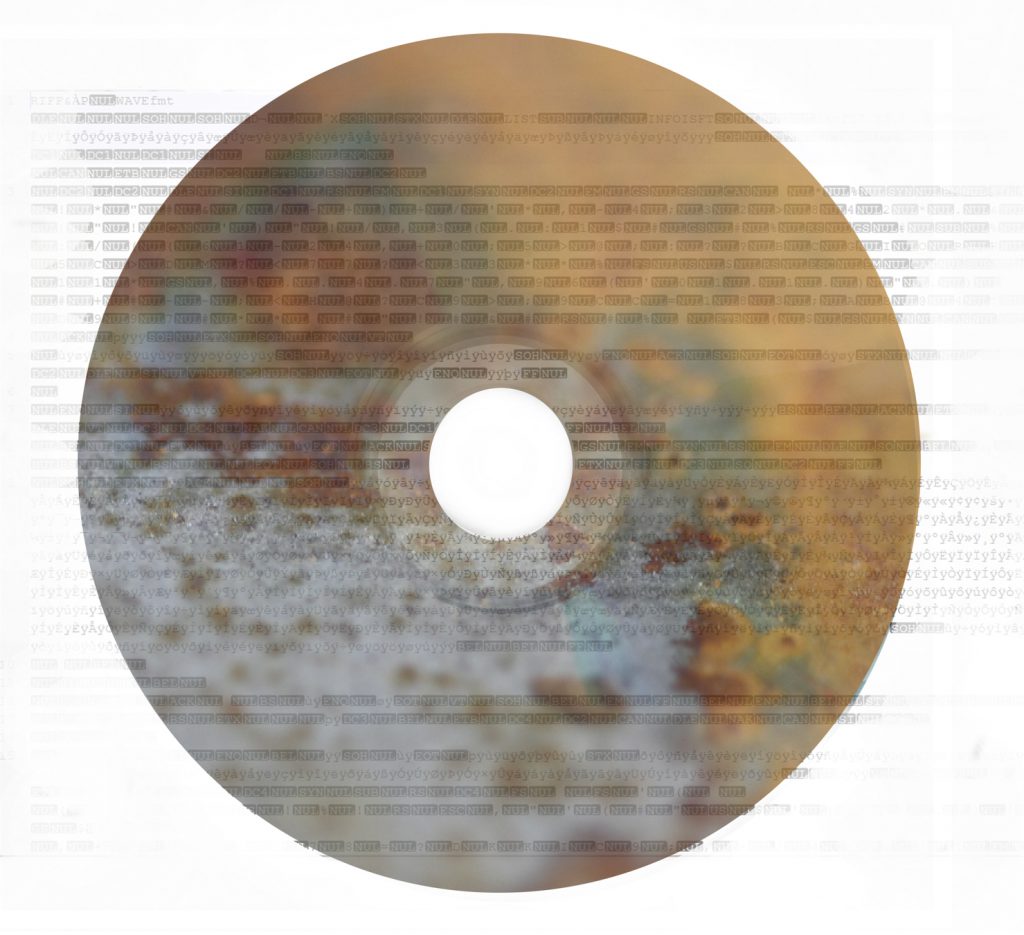
Art’s birthday 2020
We had a great evening at the Kunstradio Art’s Birthday Party! The audio CDs we produced live were given away as presents to the audience, hopefully delighting Art too.
Our performance is aired on Kunstradio-Radiokunst, radio ORF Ö1 on February 26 2020 11pm.
Materialities symposium, Sussex University, Brighton, December 4+5
Thomas Grill and Till Bovermann will represent activities of the Rotting Sounds project within a fast-paced symposium on the subject of materialities in music making.
Duo Performance @ the Rosehill Arts: December 4, 9pm
Thomas Grill – Musical material
Probing of fragments of deceased instruments by use of digital sound. Sounding the materials, shapes, resonances – tracing remnants of a musical life.
Till Bovermann – Buffer manipulations
Probing and fragmentation of deceased digital sound. Sounding the materials, shapes, resonances – tracing remnants of a brief ephemerality.
Masterclass and Round table/panel discussion: December 5, 10-13h
Notions of materiality and influence on practice
Topics relating to notions of materiality and influence on practice are discussed by a panel of academics/composers and performers. This promises to be a lively debate relating to media archeology, liveness and audience perspective.
Participants include Evelyn Ficarra, Tom Richards, Till Bovermann, Thomas Grill and others.
The Wire review of AI x Music festival
Sumit Paul-Choudhury has contributed a review of Ars Electronica’s AI x Music festival to the The Wire magazine’s November edition, featuring our installation Mutual Understanding. It is listed as an exception to the line of presented works quite unrelated to the festival’s theme.
